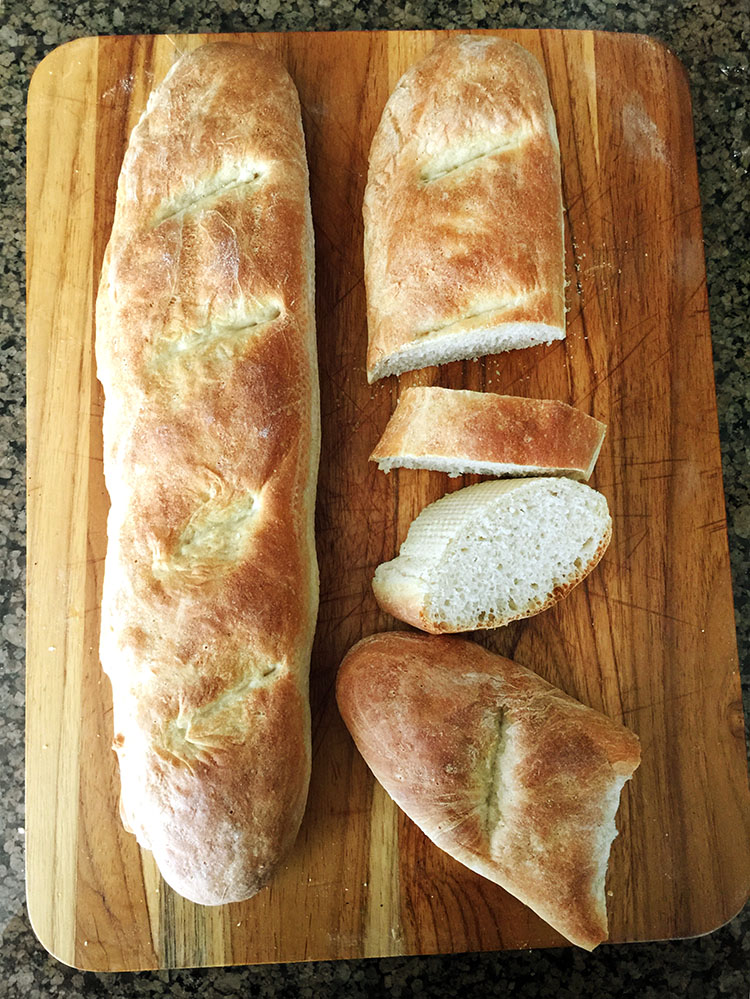
I sort of stopped paying attention to kids’ animated movies (Disney Pixar, etc.) after I saw “Ratatouille†in 2007. The level of artistic excellence in this film brought it to another level. And its theme of following one’s passions no matter what made it seem as appropriate for adults as children (even more so). The story of a little rat named Remy, a passionate little chef who finds his way to Paris and into the kitchen of a famous restaurant, was, to my mind and senses, pretty much perfect, and seeking out any of the following animated offerings — even if they were of quality — would fall short of my landmark favorite.
It’s in the rumor wind that there will be a “Ratatouille 2,†and while I’m excited to hear this, I’m also a little wary. Lightning doesn’t strike twice (well, OK, it can), and a sequel to a film so visually stunning with such an inspired story and characters, seems to be a stretch. I always have mixed feelings about great works — in part, I think the creators by all rights should do a “mic drop†and walk away satisfied with their achievement as enough; on the other hand, if talent can produce something so good once, why not keep going?

[I]n the meantime, I revisit Remy and the movie, watching it at least once a year. And recently, thumbing through the pages of the little cookbook from the film, “Ratatouille — What’s Cooking: A Cookbook for Kids†(Disney Press: 1997), I came upon what looked like a simple recipe for classic French baguettes. In the movie, Chef Colette describes what makes a good bread: https://www.youtube.com/watch?v=rk6j7lhNf1o
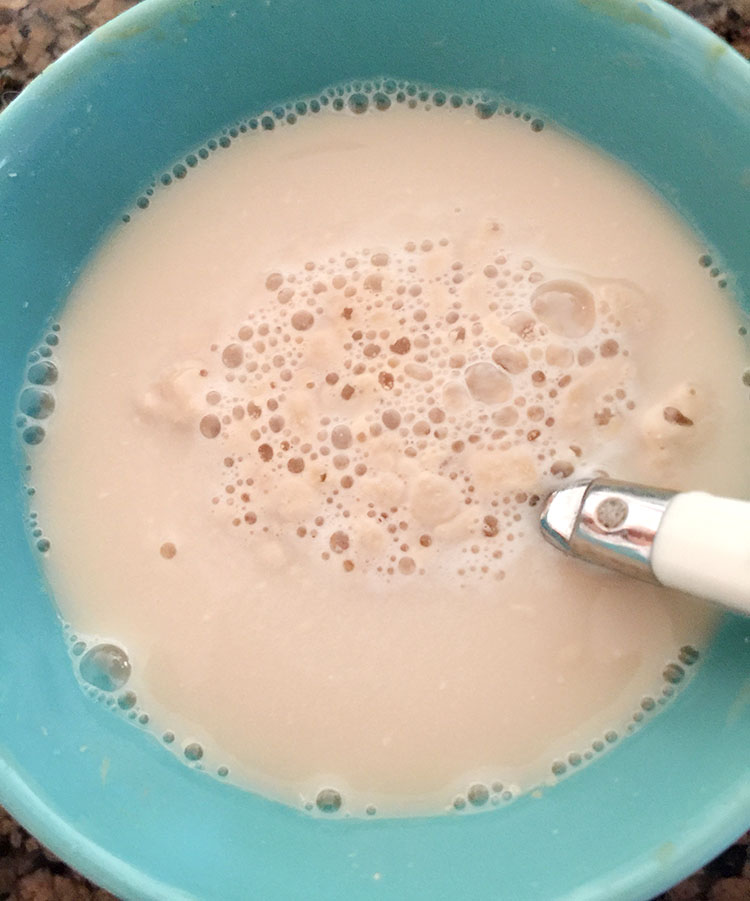
[A]mazing that such a few ingredients — yeast, warm water, flour and salt — can come together to make fresh, homemade bread. But what a great (and magical) lesson for kids (and adults)! The recipe begins with dissolving a tablespoon of yeast in hot water.
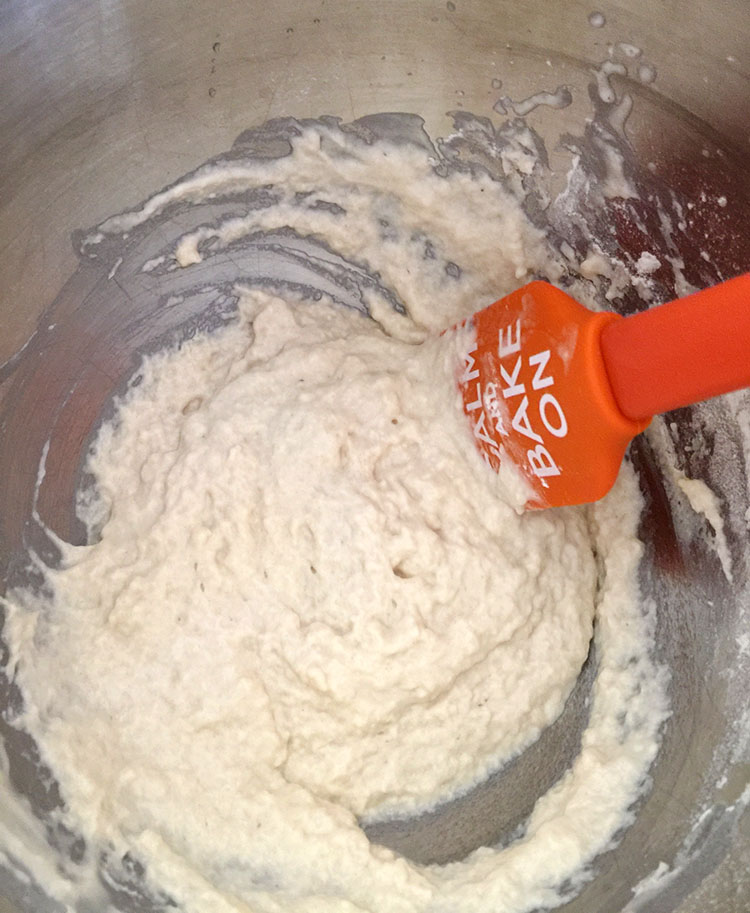
[A] cup of flour, salt and more warm water are combined in a large bowl as the base of the dough.
The dissolved yeast is then added.
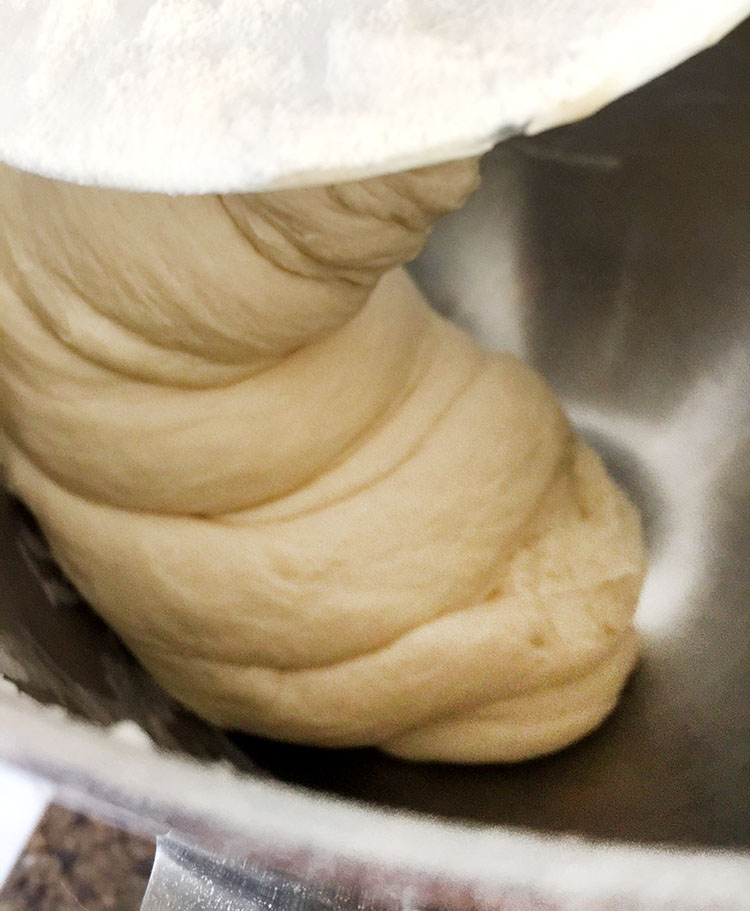
[A]nd more flour is mixed in to make a soft dough. Here, the kneading commences…10 minutes of kneading. While I recommend that kids get their hands in it and learn kneading techniques, I, as a lazy adult (kidding), opted for my mixer and a dough hook to ensure that the dough evolved properly.
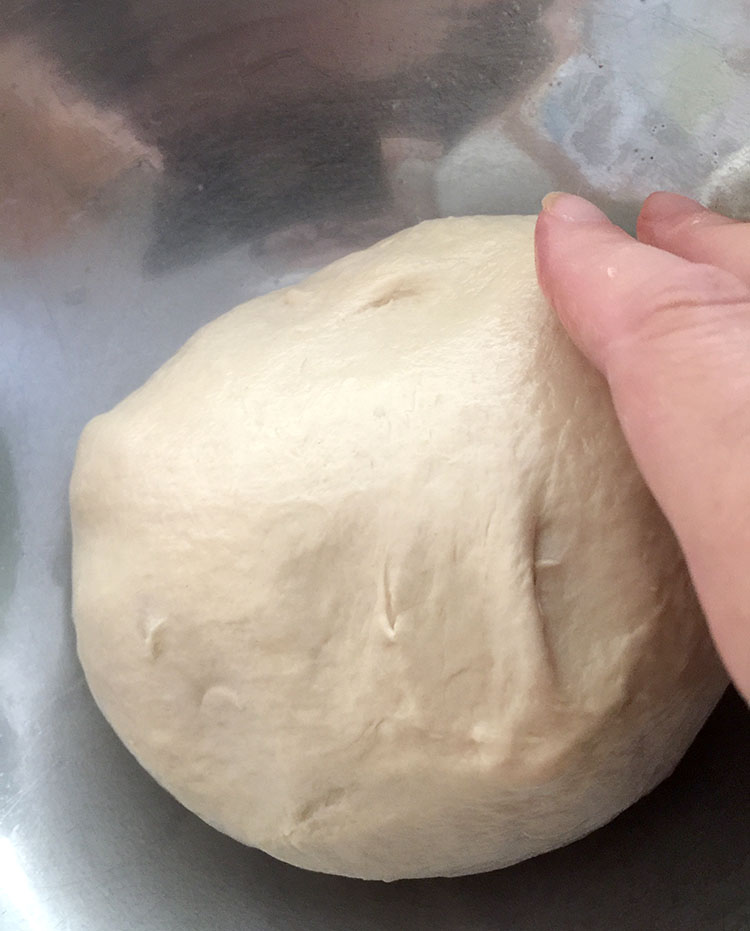
[A]fter 10 minutes in the KitchenAid, the dough was smooth and looked to have a lively consistency — warm, fleshy and breathing.
[I ]opted for some good quality olive oil to grease my metal bowl in which the dough would rise.
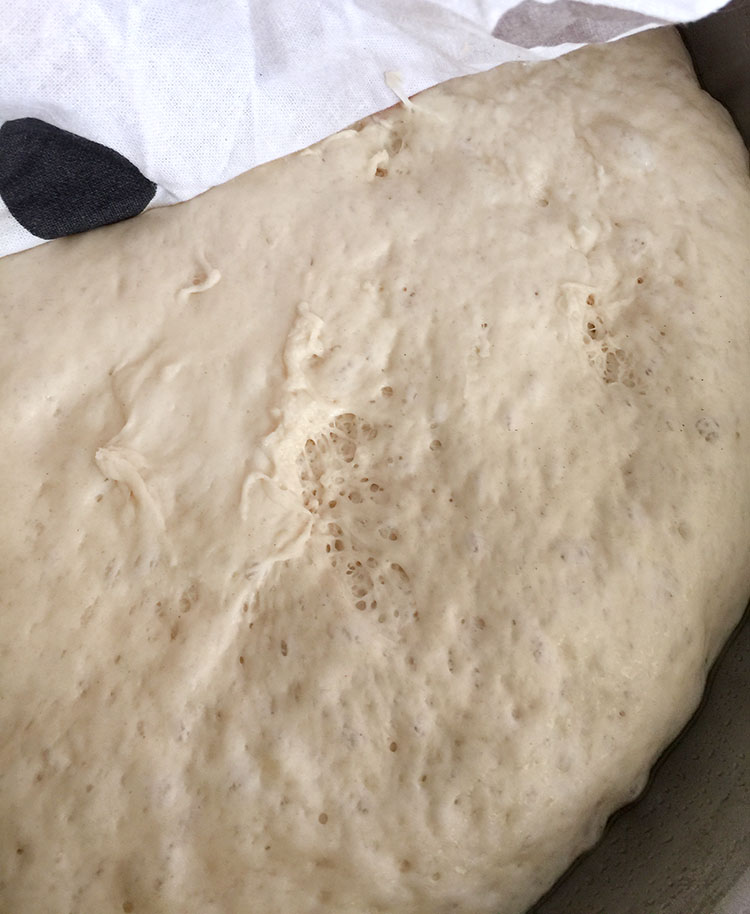
[I] made sure the dough was coated with the oil, and I covered the bowl and put it in the oven (tip: I usually heat my oven to a low temp, under 200 degrees, then turn it off a little bit before putting dough in to rise).
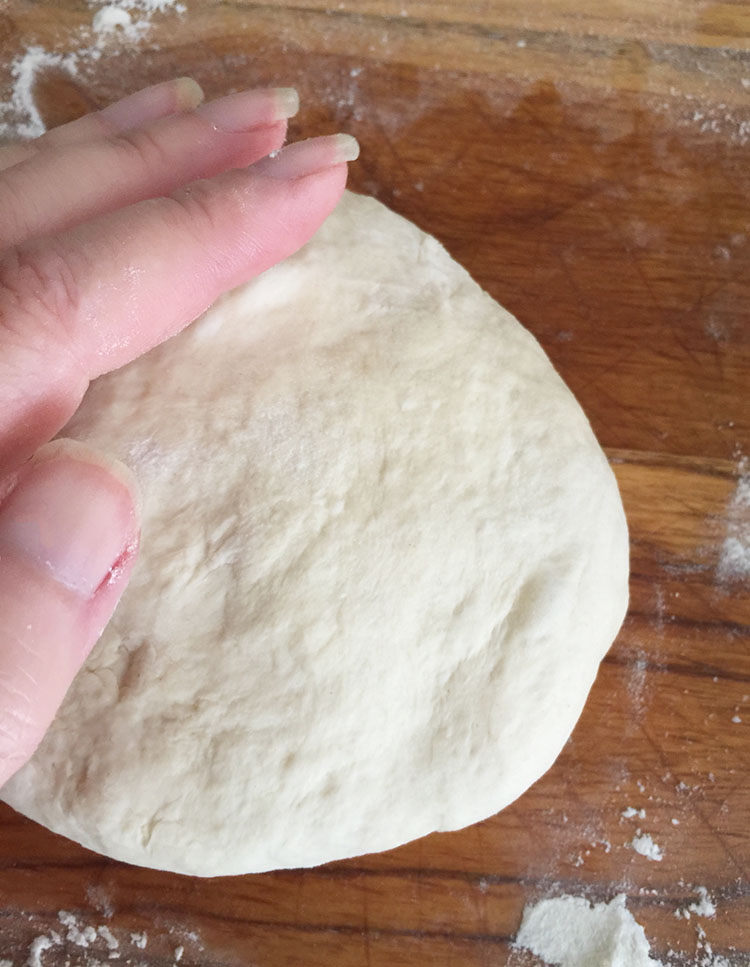
[T]he dough bloomed up nicely and was bubbly with yeast activity after two hours of rising.
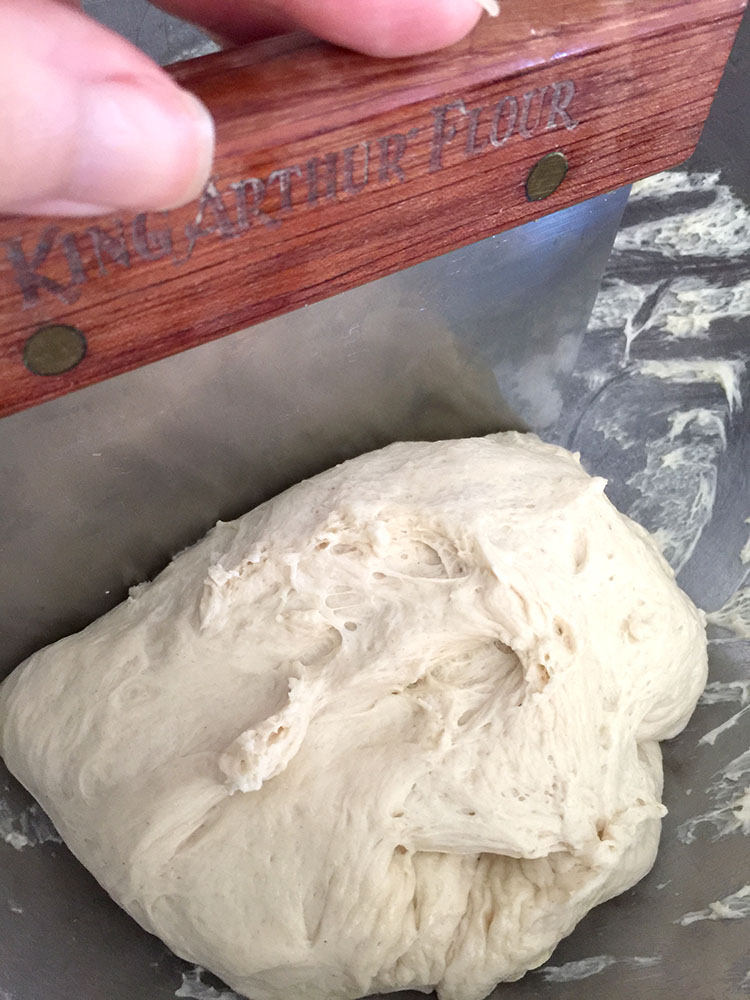
[I] cut the dough in half and kneaded each half briefly (by hand!), getting some of the bubbles out.
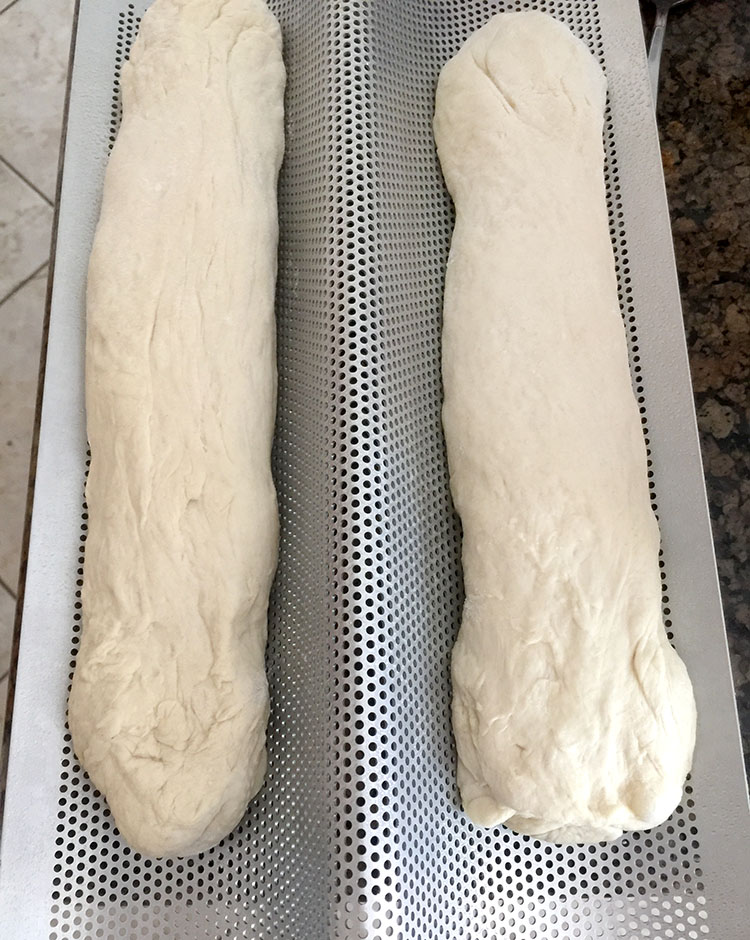
[I] formed each half of the dough into a “snake.†Here, instead of putting the dough on a cornmeal-dusted cookie sheet, as instructed in the recipe, I used a pan I got awhile back specifically for baguettes. It is vented and nonstick and has too long indentations for long bread loaves.
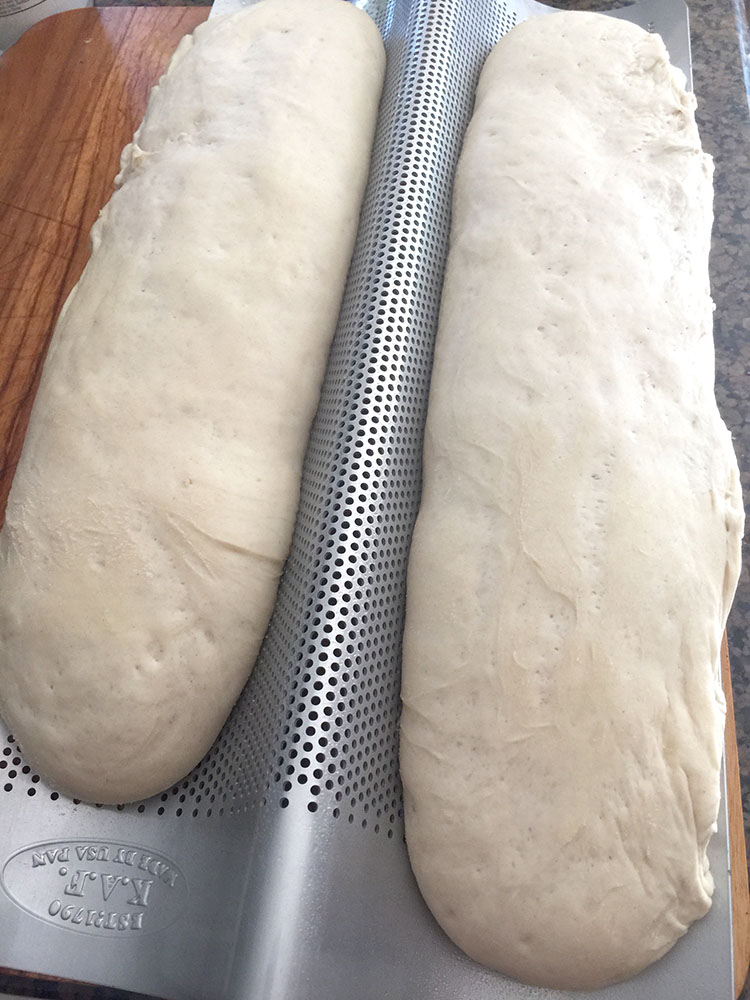
[T]he risen baguettes were nearly creeping over the side of the pan, but looked nice and full after about an an hour of rising.
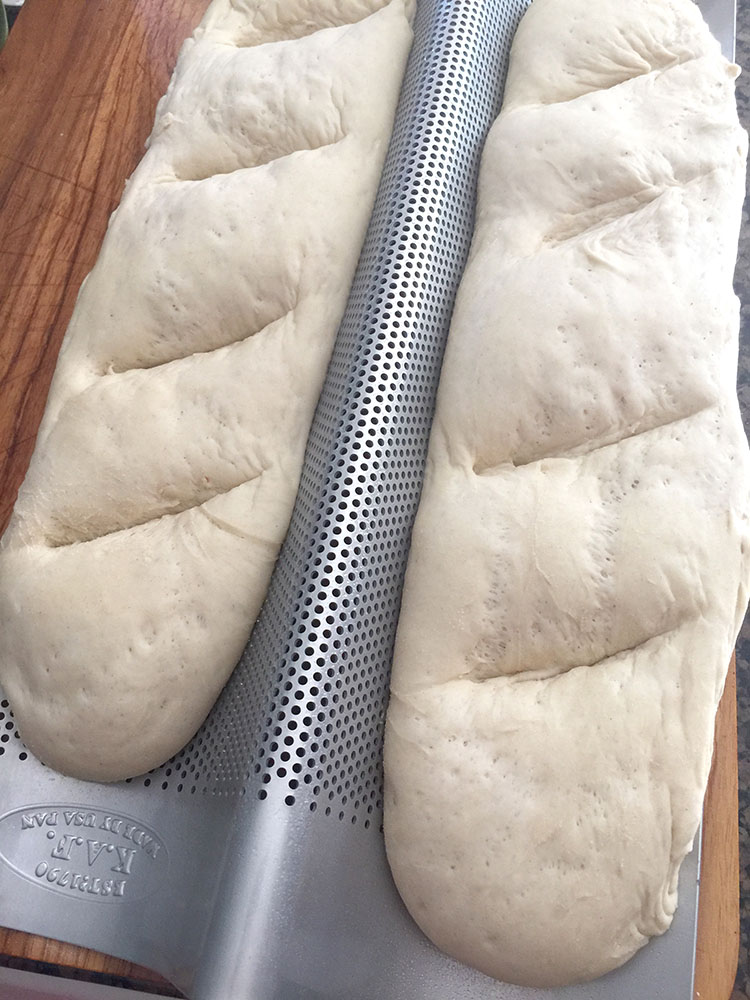
[U]sing a paring knife, I cut “slashes†along the dough’s surface for each baguette. I likely need something a little lighter and sharper for this process, but they turned out looking OK, anyway.
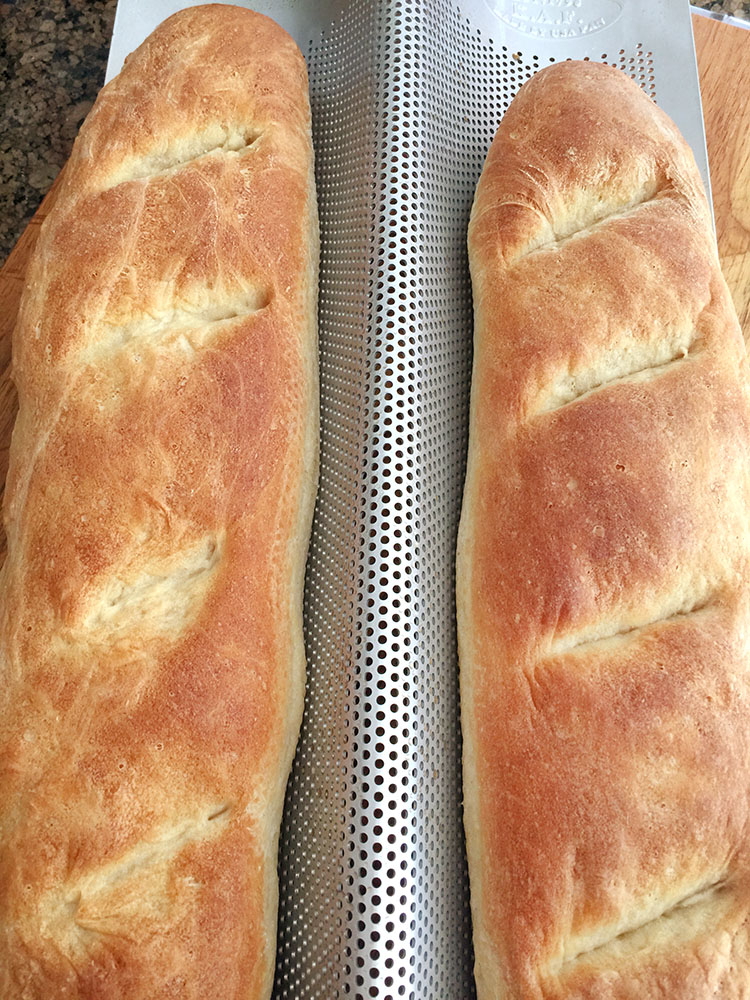
[T]he bread loaves baked up beautifully (using a pan of water in the oven during baking helped the develop a crunchy crust), turning a golden brown and making the house smell heavenly.
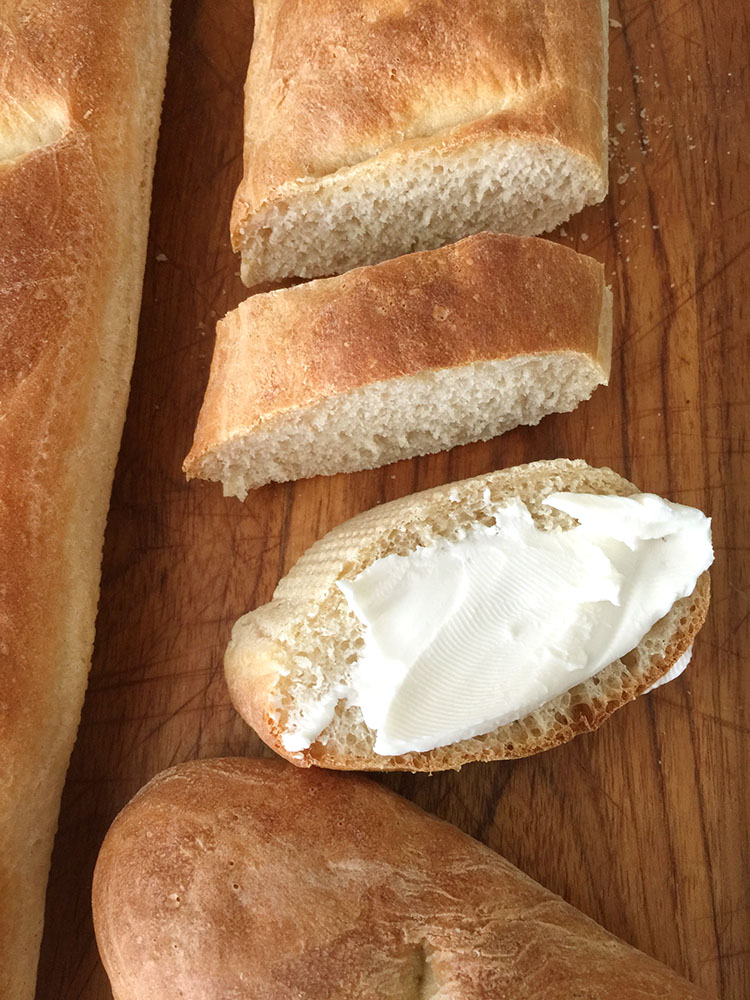
[I] was so anxious to try…I cut a slice (the texture looked light and tender), and found myself marveling at the simplicity of a recipe turning easily into high-quality bread, with so much flavor! With two loaves produced, this would be a worthy effort for anyone — young or old — to try. The message from “Ratatouille†that anyone can cook translated here to anyone can bake — inspired by the right movie, cookbook or recipe.
A Classic Baguette
From “Ratatouille — What’s Cooking: A Cookbook for Kids†(Disney Press: 1997)
Makes 2 loaves
- 1 tablespoon active dry yeast
- 1 1/2 cups warm water
- 3 3/4 to 4 1/2 cups flour
- 1 1/2 teaspoons salt
- 2 tablespoons cornmeal
In a small bowl, dissolve the yeast in the 1/2 cup of the water. Pour the remaining water into a large bowl and add 1 cup of the flour and the salt. Add the yeast mixture and enough flour to form a soft dough. Turn the dough out into a lightly floured surface and knead for 10 minutes.
Grease a large bowl with oil and drop the dough in, turning to coat the top. Cover with plastic wrap or a damp cloth and let it rise in a draft-free area for 2 hours, or until the dough doubles in size.
Punch the dough down and divide it in half. On a lightly floured surface, knead each half several times and roll into a snake. Pinch out any air bubbles, then place the snakes on a cookie sheet coated with he cornmeal. Cover and let rise until doubled, about 1 hour.
Heat the oven to 425°. Place a metal pan on the bottom rack and pour 1 cup of hot water into the pan (this will create the steam to give your bread a crunchy crust). Using a sharp knife make four diagonal 1/4-inch cuts in the top of the loaves. Place the loaves in the oven. Bake for 20 to 25 minutes. Remove from the oven and cool. These loaves are best eaten on the day they are made, or frozen.